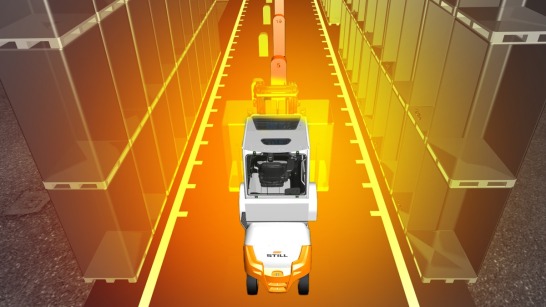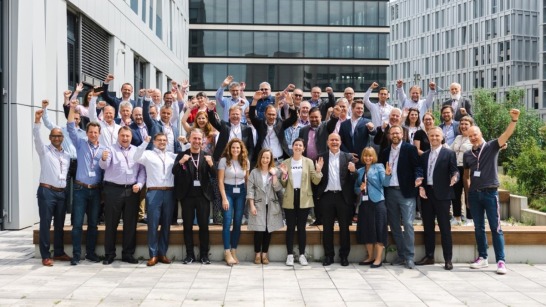How a 5G Campus Network Functions
A 5G campus network is a wireless local area network that can be directly installed on a particular site. Unlike Wi-Fi, it is based on cellular technology. “Everyone has Wi-Fi at home, and can see their neighbor’s Wi-Fi network too. When this significantly impairs your own service, it can be really irritating. That’s not a problem with campus networks as they use their own dedicated frequency in the range between 3.7 and 3.8 GHz, a range that is not used by the public. This makes it possible to achieve uninterrupted communication with no risk of the connection dropping out, all whilst ensuring very high transmission speeds,” explains Bergmann.
Another major benefit of 5G campus networks is that they are not limited in terms of the size of the area they can cover. All companies need to do is ensure that they have installed enough base stations on the site to allow the end devices to connect to the wireless network. This makes 5G campus networks a universal solution for intralogistics, as the size of the warehouse is irrelevant. Their key feature is consistent wireless coverage without interruptions when switching between radio cells, even over large areas, both indoors and outdoors.
5G Technology in Use at the KION Group
The first 5G campus network was put into operation in Hamburg in February 2022. KION is now also testing a 5G network in Heusenstamm and in Aschaffenburg. In Aschaffenburg, there is the largest area coverage with 5G, as outdoor areas are also included. At all three sites, KION is working with the hybrid model, i.e., the core technology is currently still WLAN: The equipped subareas that are already networked via 5G will provide insights into when and how to switch over completely.
KION mainly uses 5G for research projects at present. Bergmann and his colleagues are trying to establish which technologies work even better with 5G and in which areas of the company 5G coverage is possible. Of course, this expertise will benefit customers too, as it allows the KION Group to help customers with a range of different application profiles and give them the best possible advice on integrating 5G technology.
But there are already some specific plans in the pipeline, too: at KION subsidiary Dematic, 5G will in future play a supporting role in the assembly and commissioning of systems at construction sites. In the APAC region, 5G is already more widespread and is being tested in a range of scenarios. “We of course started by building networks to help us understand the technology so we can adapt our products to the technology as effectively as possible. What we now know for certain is that we can do even more. With 5G, we could achieve more stable communication with higher data rates. This would undoubtedly be beneficial in a smart factory,” explains Bergmann.





